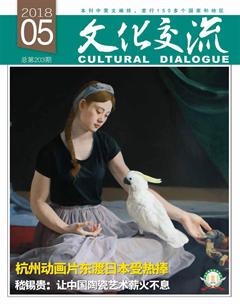凝結(jié)兩國情誼的一款蒸汽機(jī)車
嚴(yán)介生
兩個國家級的鐵路博物館,一個位于中國首都北京,一個坐落在英國的約克郡,各自在展廳的醒目位置陳列著同一款蒸汽機(jī)車,分別是“KF1型6”和“KF1型7”,分明是一對“姐妹車”。這是怎么回事?背后又有著怎樣的機(jī)緣?
中國設(shè)計,浙籍工程師發(fā)憤圖強(qiáng)推出新機(jī)車
故事得從上世紀(jì)30年代說起。“九一八”事變后,日本加快了擴(kuò)大侵華戰(zhàn)爭的步伐,中國政府不得不加緊備戰(zhàn)。備戰(zhàn)的一個重要舉措是,要在4年之內(nèi),即于1936年底前建成株洲到韶關(guān)間456公里的鐵路新線,使33年前張之洞等籌建的京廣鐵路得以完工,成為一條真正貫通國家南北的大動脈。幾經(jīng)周折,資金算是有了著落。但研究到采購何種機(jī)車的時候,問題來了:這段新線的郴州至樂昌間是長江與珠江水系的分水嶺,山崗錯雜,溪澗迂回,新建的線路坡度大,曲線半徑小,橋梁多而且建筑標(biāo)準(zhǔn)低,承載能力差,因而所用的火車頭既要功率大,又要自重輕,還須特別靈活,能拐小彎而不翻車。英國是鐵路的發(fā)源地、蒸汽機(jī)車制造強(qiáng)國,卻沒有一款能夠同時滿足這些要求的。這使民國鐵道部門十分為難,反復(fù)討論之中,一位青年技術(shù)人員大膽提出:我們自己設(shè)計制造!
這位主張自力更生制造機(jī)車的人,名叫應(yīng)尚才。應(yīng)尚才是浙江奉化人,1913年清華學(xué)堂畢業(yè)后公費(fèi)留學(xué)美國俄亥俄州凱斯工業(yè)技術(shù)大學(xué),攻讀機(jī)械工程,學(xué)成后在美國著名的鮑爾溫機(jī)車制造廠等處工作多年,回國后在津浦鐵路機(jī)務(wù)處等鐵路部門任職,1932年調(diào)入國民政府鐵道部路政司技術(shù)標(biāo)準(zhǔn)委員會工作。了解應(yīng)尚才深厚功底的路政司幫辦、機(jī)車專家楊毅等人對他表示大力支持,上級也就批準(zhǔn)了。

就這樣,設(shè)計新機(jī)車的任務(wù)落到了應(yīng)尚才肩上。由于時局緊迫,國民政府要求株韶段鐵路提前鋪通,機(jī)車設(shè)計也須加快進(jìn)度。應(yīng)尚才時年37歲,身強(qiáng)力壯,日夜工作,竟然只用半年時間,就完成了一臺客、貨兩用大型蒸汽機(jī)車KF1型的總體設(shè)計任務(wù)。這是自1876年鐵路筑進(jìn)華夏大地半個多世紀(jì)以來,第一臺由中國工程師獨(dú)立完成設(shè)計的蒸汽機(jī)車,而且采用的是當(dāng)時世界上最先進(jìn)的理念和技術(shù)。他通過對鍋爐和爐床結(jié)構(gòu)的改進(jìn),使機(jī)車輪周功率達(dá)到2350馬力,僅次于開行于京張線33‰陡坡上、俗稱“大馬力”的美制馬特萊機(jī)車;他把機(jī)車的走行部分設(shè)計成2對導(dǎo)輪、4對動輪、2對從輪,使總重195噸的火車頭由8條輪軸來分擔(dān),不僅減輕了對線路、橋梁的壓力,還可使機(jī)車在100公里/小時的速度下安全平穩(wěn)地通過小半徑曲線。總之,KF1型的主要技術(shù)指標(biāo)與當(dāng)時開行于中國鐵路上的所有外國機(jī)車相比,都處于先進(jìn)之列。
英國制造,運(yùn)行良好戰(zhàn)后死而復(fù)生再擔(dān)重任
然而,國內(nèi)雖有30多家機(jī)車車輛工廠,卻都只能修理,沒一家具備制造整臺機(jī)車的能力。有關(guān)部門只得向國外招標(biāo),結(jié)果便“花落”英國伏爾岡機(jī)車工廠。
1934年,應(yīng)尚才奉派到英國這家工廠監(jiān)造自己設(shè)計的機(jī)車。他向廠方介紹了自己的“均衡設(shè)計思想”和設(shè)計要求,受到英國同行的歡迎與尊敬。伏爾岡廠實(shí)力雄厚,制造質(zhì)量上乘。雙方合作得很好,進(jìn)展順利。中方定制的24臺機(jī)車成功交付,從1936年起分批運(yùn)抵國內(nèi),先后在膠濟(jì)、滬寧等鐵路上試車運(yùn)行。測試考核的結(jié)果以及后來的實(shí)際運(yùn)用,都證明KF1型機(jī)車性能良好,完全達(dá)到設(shè)計要求。
1944年11月,日寇進(jìn)攻桂林、柳州,鐵路員工費(fèi)了很大力氣從淪陷區(qū)轉(zhuǎn)移出來的KF1型機(jī)車來不及撤離。為了不讓它們落入日寇之手,只得把炸藥安放到機(jī)車的煙箱底鞍處,忍痛炸毀。
中華人民共和國成立后,鐵道部門于1950年找到了這批自行破壞的KF1型機(jī)車。專家仔細(xì)鑒定后發(fā)現(xiàn),這些機(jī)車雖已銹跡斑斑,但主體部分并未徹底毀壞。這批車被運(yùn)到戚墅堰機(jī)車工廠,其中21臺被“救活”了。死而復(fù)生的KF1型機(jī)車開到當(dāng)時最繁忙的滬寧鐵路,成為該線牽引特快、專列和快貨列車的主力機(jī)車,一直奔馳到1974年,上海機(jī)務(wù)段全部改用內(nèi)燃機(jī)車,才光榮退役。
老友相會,引出兩國合作交流一段佳話
1966年11月,出席孫中山先生誕辰一百周年紀(jì)念活動的外國友人中,有一位來自英國的鐵路專家肯尼思·康德黎。這位先生20世紀(jì)30年代曾在國民政府鐵道部當(dāng)過顧問,對應(yīng)尚才設(shè)計和赴英監(jiān)制KF1型機(jī)車給予過許多幫助。康德黎這次來華期間,兩次與老朋友應(yīng)尚才會見。應(yīng)尚才時任北京鐵道學(xué)院鐵道機(jī)械系主任。康德黎對KF1型機(jī)車還在滬寧線擔(dān)任繁重牽引任務(wù)感到驚喜不已,參觀上海機(jī)務(wù)段時還登上司機(jī)室“駕駛”一番。臨別,康德黎鄭重提出,希望能有一臺KF1型機(jī)車回到它的出生地,在英國機(jī)車博物館中展出,以此紀(jì)念英中兩國鐵路技術(shù)人員親密合作的友誼。他請求應(yīng)尚才促成此事。
這位肯尼思·康德黎先生可不是一般的外賓。1896年10月孫中山到英國向華僑宣傳革命。11日,孫中山前去探望他在香港西醫(yī)書院學(xué)醫(yī)時的老師詹姆斯·康德黎,不料半路被大清國駐英使館人員綁架。幸而一名英國清潔工人伸出援手,把孫中山寫的求救信送到了詹姆斯·康德黎手中。孫中山終于被營救出來。應(yīng)尚才的老朋友肯尼思·康德黎,就是孫中山這位授業(yè)恩師和救命恩人的小兒子。所以,中國鐵路部門對他的提議是非常重視的,但第二年就開始了十年動亂,此事一直未能落實(shí)。1979年7月,中國鐵路代表團(tuán)訪問英國期間,英方舊事重提。這時,中國的大門正逐漸對外打開,因而中方給予了積極回應(yīng)。1983年初,油漆一新、披紅掛彩的KF1型7號機(jī)車被裝上輪船,飄洋過海回到闊別近半個世紀(jì)的出生地。同年3月30日,雙方在英格蘭約克郡的英國國家鐵路博物館舉行了隆重的交接儀式,館方對這份中國贈送的厚禮格外珍重,把機(jī)車放到展廳的醒目位置。幾年后,中國鐵道博物館在北京東郊落成,KF1型6號機(jī)車也被陳列其中。一對姐妹機(jī)車,就這樣以親身的經(jīng)歷,向參觀者講述著遠(yuǎn)在蒸汽機(jī)車時代中英兩國鐵路先輩所進(jìn)行的技術(shù)交流和合作共贏的一段美好故事。
Both China Railway Museum based in Beijing and British Railway Museum based in York displays a KF1 class steam locomotive at a conspicuous spot. One in China presents its serial number KF1-6 and the other in UK shows its serial number KF1-7. They are twins. Behind the locomotives is a long story.
As Japan quickened its steps to launch an all-out invasion into China after September 18 Incident in 1931, the Chinese government geared up preparations for the war. One of the key undertakings was to build a 456-km railway that would connect Zhuzhou in Hunan Province to Shaoguan in Guangdong Province. The strategic railway artery, scheduled to be able to operate by 1936, would complete the railway project started 33 years before by Zhang Zhidong to connect Beijing in the north and Guangzhou in the south.
After the funding problem was solved, the railway authorities encountered a huge problem. The railway was to cross the watershed that divides the Yangtze River and the Pearl River. The challenges posed by the terrains were intimidating. What kind of locomotives would be used to operate smoothly through all the small bridges, relatively sharp turns, and steep slopes? After several brainstorming sessions, Ying Shangcai, a 37-year-old engineer who had studied and worked in the United States, proposed to design and build a special type of locomotives that could do the job. The proposal was approved.
Ying went ahead with the design. He worked day and night and completed the general design for a steam locomotive within half a year. What he came up with was a brilliant innovation since the inception of railway in China in 1876. The technological solution could function for both freight trains and passenger trains. Its technical parameters were advanced if compared to cutting-edge technologies of the world.
Back then, China had about 30 locomotive factories, but they were all engaged in repairing locomotives. None was able to make a complete steam locomotive. The Valcan Foundry in Britain won the international bidding to manufacture the new engines for China.
In 1934, Ying Shangcai arrived at the foundry to supervise the manufacturing. He gave talks to his British counterparts on the engineering consideration and technical requirements for the new-type locomotives and his admirably innovative ideas were warmly embraced.
The Valcan Foundry started delivering 24 steam locomotives to China in 1936. The locomotives were first trial-tested in different railways in China. And then they were used in the railway from Zhuzhou to Shaoguan. These locomotives worked pretty well.
In November 1944, Japanese aggressors launched a military campaign to attack Guilin and Liuzhou in the southwest of China. The Chinese army withdrew. The locomotives, which had been evacuated from other regions earlier before Japanese soldiers moved in, were dynamited by Chinese engineers as the locomotives had nowhere to go.
In 1950, shortly after the founding of Peoples Republic of China in October 1949, the national railway authorities thought it necessary to evaluate the damaged locomotives in the hope that some of them might be able to run. Experts examined them and concluded that though they looked rusty and ugly, there was a possibility to bring them back. The locomotives were sent to a factory in Qishuyan near Changzhou in eastern China. Twenty-one of them were successfully restored. These locomotives pulled fast passenger trains and freight trains between Shanghai and Nanjing until 1974 when all steam locomotives got replaced by diesel ones.
In 1966, Kenneth Cantlie visited China to attend the 100th anniversary of the birth of Dr Sun Yat-sen. He had worked as an advisor in the 1930s for the railway department of the Chinese national government and helped Ying Shangcai a lot in his design of the KF1 class locomotive. In 1966, he and Sun, then the dean of the mechanical department of Beijing Railway College, met twice in Beijing. Cantlie was surprised to learn that the KF1 class locomotives were performing satisfactorily on the Shanghai-Nanjing railway. While visiting the Shanghai Railway Bureau, Cantlie nostalgically climbed into the cab of a KF1 class locomotive and admired the powerful machine. At the end of the visit, he said he wished to bring a KF1 class locomotive back to UK in honor of the cooperation between railway engineers of China and UK in the 1930s. He urged Ying to do something and make it happen.
Kenneth Cantlie was the son of James Cantlie, who taught Dr. Sun Yat-sen in Hong Kong College of Medicine for Chinese in the early 1890. In 1896, Dr. Sun was detained at the Chinese Legation in London, where the Chinese imperial secret service planned to kill him. He was released after 12 days through the efforts of James Cantlie and local media and British government.[When the proposal from Kenneth Cantlie was made known, the national railway authorities took it seriously. However, the Cultural Revolution started in 1966 and sending a KF1 class specimen to UK was shelved. It was not until July 1979 when a Chinese railway delegation was visiting Britain that the British railway authorities made the request again. China agreed. In early 1983, a locomotive with serial number KF1-7 was shipped from China. On March 30, a ceremony was held at Britain Railway Museum in York to mark the handover of the locomotive.

